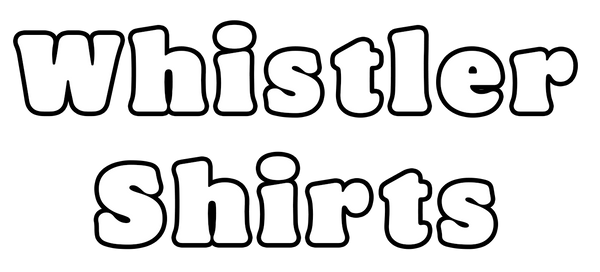In the world of custom printing on clothing, two popular methods have emerged as game-changers: DTG (Direct-to-Garment) printing and DTF (Direct-to-Film) printing, and at Whistler Shirts we offer both methods.
These techniques allow for high-quality, detailed designs to be printed on garments, but they differ in terms of the printing process and the materials used. In this blog post, we'll explore the nuances of DTG and DTF printing, highlighting their unique characteristics and helping you understand which method may be best suited for your printing needs. DTG (Direct-to-Garment) Printing: DTG printing involves directly printing designs onto garments using specialized inkjet printers. Here's what you need to know about DTG printing:
- Printing Process: DTG printers utilize inkjet technology to spray water-based inks directly onto the fabric. This layer-by-layer approach allows for intricate details and stunning color gradients, resulting in vibrant and accurate designs.
- Color Range: DTG printing boasts an extensive color range, making it ideal for complex designs and photorealistic prints. From vibrant hues to subtle shading variations, DTG ensures your designs come to life.
- Fabric Compatibility: DTG printing works best on 100% cotton or cotton-blend fabrics. The ink needs to be absorbed by the fabric fibers for optimal results. While it may work on synthetic materials, its effectiveness might be limited.
Pros of DTG Printing:
- High level of detail and color accuracy.
- Perfect for small print runs and custom designs.
- Ideal for complex designs with multiple colors and gradients (eg. photos)
Cons of DTG Printing:
- Slower production speed compared to other methods.
- Limited suitability for synthetic fabrics.
- Costs can increase for larger quantities due to ink consumption.
DTF (Direct-to-Film) Printing: DTF printing is a relatively newer technique that involves transferring a printed design from a special film onto the fabric. Let's delve into the key aspects of DTF printing:
- Printing Process: DTF printing begins with digitally printing the design onto a special film using a dedicated printer with adhesive ink. This ink contains color pigments and adhesive properties. The film is then transferred onto the fabric using a heat press machine.
- Color Range: Similar to DTG printing, DTF offers a wide color range, enabling vibrant and detailed designs to be printed onto garments.
- Fabric Compatibility: DTF printing is versatile and can be used on various fabrics, including cotton, polyester, blends, and even some non-textile surfaces. This flexibility makes it suitable for a range of printing projects.
Pros of DTF Printing:
- Good color vibrancy and detail.
- Faster production speed compared to DTG printing.
- Works well on a wide range of fabrics.
- Allows for larger print runs and bulk production.
Cons of DTF Printing:
- Additional step of transferring the film onto the fabric.
- Some films may leave a slightly noticeable texture on the garment.
- Requires additional equipment (heat press machine) compared to DTG printing.
- Higher upfront costs due to the need for film and ink.
Choosing between DTG and DTF printing depends on various factors, such as fabric type, design complexity, production speed requirements, and budget considerations. DTG printing excels in its ability to deliver intricate designs and vibrant colors, while DTF printing offers versatility and faster production for larger quantities. By understanding the nuances of these processes, you can make an informed decision and achieve outstanding results in your custom printing endeavors. Get in touch with Whistler Shirts today to get a quote for your custom order!
